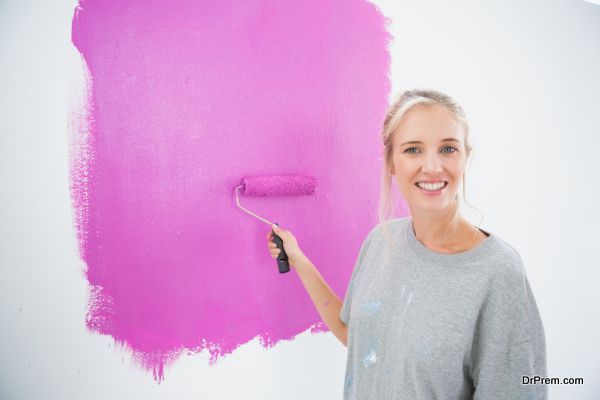If you want to to produce a warm and appealing living space, consider using homemade, eco-friendly paints. Using natural resources is a good way to allow painted surfaces to discharge moisture naturally. Most commercial paints contain toxic materials or petroleum-based ingredients that use up too much energy to produce.

There are several eco-friendly options on the market, but their cost which is sometimes up to twice as much as conventional paint can be too expensive to painters on a budget. Many DIYers are opting to make their own paint.
Make your own eco friendly paint
In its most basic form, paint consists of color (the pigment) and the glue in which the pigment is suspended (the binder). Many paints also contain ingredients that add texture and bulk (fillers), a thinner (the solvent) and other additives, such as biocides and drying catalysts.
Pigments. There are safer alternatives to the toxic compounds and heavy metals used to color conventional paint. These include natural pigments sourced from plants, insects, iron oxides and minerals. These are generally in powder form at artists’ supply stores.
Binders. Binders keep paint glued to a exterior. The acrylic and vinyl binders in commercial paints are derived from the byproducts of refining crude oil. The binders in natural paints are based on materials such as starch (from flour), casein (the protein in milk) and linseed oil (from pressed flax seeds).

Fillers. Fillers create texture and add bulk to paint. Universal fillers consist of whiting (powdered chalk), talcum, limestone, silica and marble. Clay is a well-liked filler to pair with flour, because it reinforces the binding ability of starch, and it’s copious and potentially free if you have clay soil.
Solvents. Solvents, or thinners, help achieve a practical uniformity. The solvents present in commercial paints are generally made from organic materials, but they will evaporate or “outgas,” causing that new paint smell. The outgassing of these volatile organic compounds (VOCs) can cause headaches, nausea, dizziness, blurred vision and fatigue, particularly in areas that are not well aired. The hazards are considerably worse for people who paint regularly. Natural solvents such as citrus thinners and natural turpentine are preferable, but they can still emit low levels of VOCs.
Additives. Commercial paint manufacturers regularly include more than a few additives in their products, but they aren’t mandatory to list them on the can. Additives also take in plasticizers, foaming and antifoaming agents, driers, biocides that restrain the growth of mold, and ingredients that improve water resistance or opacity.




